The Papal Princes
Christian Lords of Hell on Earth
Bloody Annals from the Church of Christ
Callistus
In 198 Victor died but much to Hippolytus’s disgust (he had hoped for the top job himself) a cleric called Zephyrinus (198 – 217) took the bishop’s chair. Hippolytus, in the first book of his Refutation – called the ‘Philosophymena’ – described Zephyrinus as ‘a simple man without education.’ In a later work called The Apostolic Tradition he complained that under Zephyrinus’s leadership church discipline had become lax, the church itself corrupt and public worship a scandal.
Turf War
Unlike his intellectual father, Marcus Aurelius, the dissolute Commodus entertained a favourable opinion of the Christians and employed several in the imperial court. (Not that it did him any good – the ‘Christian’ Marcia was party to the conspiracy that strangled Commodus in 193).
Party Time
Hippolytus (as rival pope) continued his attacks on the ruling faction – first Urban I (222-230), and then Pontianus (230-235) – until a new emperor, Maximinus Thrax, no friend of any Jesus faction, sent Hippolytus (and Pontianus!) to the Sardinian mines, where the old theologian died.
Gangster hires Pimp to write Bible!
The charge of murder hung over Damasus for years. His name was further blackened in the eyes of many when he renounced his wife and family, supposedly to become an exemplar of clerical chastity but also to run Rome’s city brothels! The philandering Damasus gained a name as the ‘matronarum auriscalpius’ (‘ladies’ ear-tickler’). From Milan, the quick tempered Emperor Valentinian, alarmed by misappropriated inheritances weakening the old patrician class, addressed a law to Damasus personally. The edict, which the emperor ordered read in all churches, forbade the clergy to frequent the houses of ‘orphans and widows’ or to accept further gifts and legacies.
A Silver Lining
Damasus’s artful response was to superimpose a Christian festival on the pagan one. As the early Christians had had absolutely no idea of the day, month or even year of Jesus’s supposed nativity, it was a relatively easy matter to replace the birthday of one sun god by another – at precisely the same time and adopting a great deal of the pagan paraphernalia and ritual! Thus December 25th became Christ’s birthday – thanks to the notorious party-loving Bishop of Rome Damasus I.
Can We Have That in Latin? Controlling 'the Word'
Jerome spent three years in his desert retreat, receiving regular letters from rich friends in Antioch. Whatever else he got up to, he used the time to learn Hebrew, though the Jews themselves he described as ‘single-hoofed, unclean animals.’ He also seems to have ‘worked through his problem’ because he became a sour ascetic and champion of (other people’s) virginity. He decried health itself as ‘a sign of worldliness’ and argued for bodies to be kept ‘pale and hungry.’ He extended the principle to personal hygiene:’He who has bathed in Christ,’ said Jerome, ‘does not need a second bath.’
Both the gangster Damasus and the pimp Jerome made the sainthood and, presumably, now sit at God’s right hand.
Sources:
- Malachi Martin, The Decline & Fall of the Roman Church (Secker & Warburg, 1981)
- Dan Cohn-Sherbok, The Crucified Jew (Harper Collins,1992)
- Michael Parenti, History as Mystery (City Lights, 1999)
- Leslie Houlden (Ed.), Judaism & Christianity (Routledge, 1988)
- Alexander Hislop, The Two Babylons (Partridge, 1929)
- Alan Hall, History of the Papacy (PRC, 1998)
- Helen Ellerbe, The Dark Side of Christian History (Morning Star & Lark, 1995)
- Peter De Rosa, Vicars of Christ (Bantam Press, 1988)
- David Farmer, Oxford Dictionary of Saints (OUP, 1997)
- John Julian Norwich, Byzantium (Viking, 1988)
- Eamon Duffy, Saints & Sinners: A History of the Popes (Yale, 1997)
- Richard Fletcher, The Conversion of Europe (Harper Collins), 1997)
Related Articles:
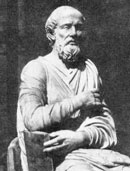
Hippolytus? (170 - 235) – Well, 16th century sculptor's idea of the philosopher anti-pope (T. Apiryon, Vatican).
Died in the Sardinian mines.
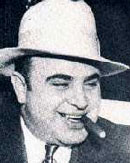
Callistus I Tough Italian who managed the Antium operation for Rome city boss Victor (189-198).
During the long reign of Victor's successor, the simple-minded and illiterate Zephyrinus (198 -217), Callistus was the power behind the throne. He became boss of bosses when Zephyrinus died.
Interesting Friends of Pope Callistus –
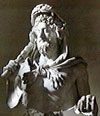
Commodus – The original 'Gladiator'
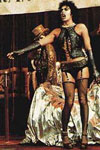
Elagabalus– something like this?
A Roman historian's digression
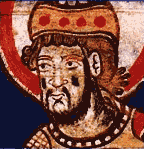
Dead Christian Storage

Plagiarist!
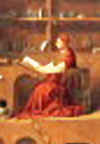
Jerome (well, according to a well-informed Renaissance artist).

Jerome – 'Christian thoughts disturbed by dancing girls.'
